Thread: Aoto Body explained..
Threaded View
-
02-10-2012 02:50 PM #11
Yes, some pics of what you're working with would help to see the damage and better suggest a repair..
Here's another sample on a crowned panel, where I used a flatter hammer.
One of the guys over on the metal shaping web sites has a neat tool he sells called a donut dolly. It works more proficiently in off-dolly shrinking a crowned panel because it supports the bottom side in more than one spot (around the perimeter) as the panel is bumped from the top in the center of the donut dolly. This would seem to be useful in body repair, especially to address high spots found after blocking primer where heat would not be as feasible.
A few days ago, someone on another forum asked for advice in removing an outward roof dent. He got "happy" with a hammer and dolly fixing dents in the roof, and had too many instances of "on-dolly", resulting in stretching and outward dents. I suggested a low-buck alternative to the donut dolly, simply using a PVC pipe fitting. Where it may not work as aggressively as the donut dolly which has more mass, sometimes slower is better, especially when trying something new. To show him how this process worked, I went out in the shop to find a sample of metal, we will use a piece of 18 ga CRS to simulate a roof.
Grid layout for the Wheeling Machine, and completed "sample" roof...
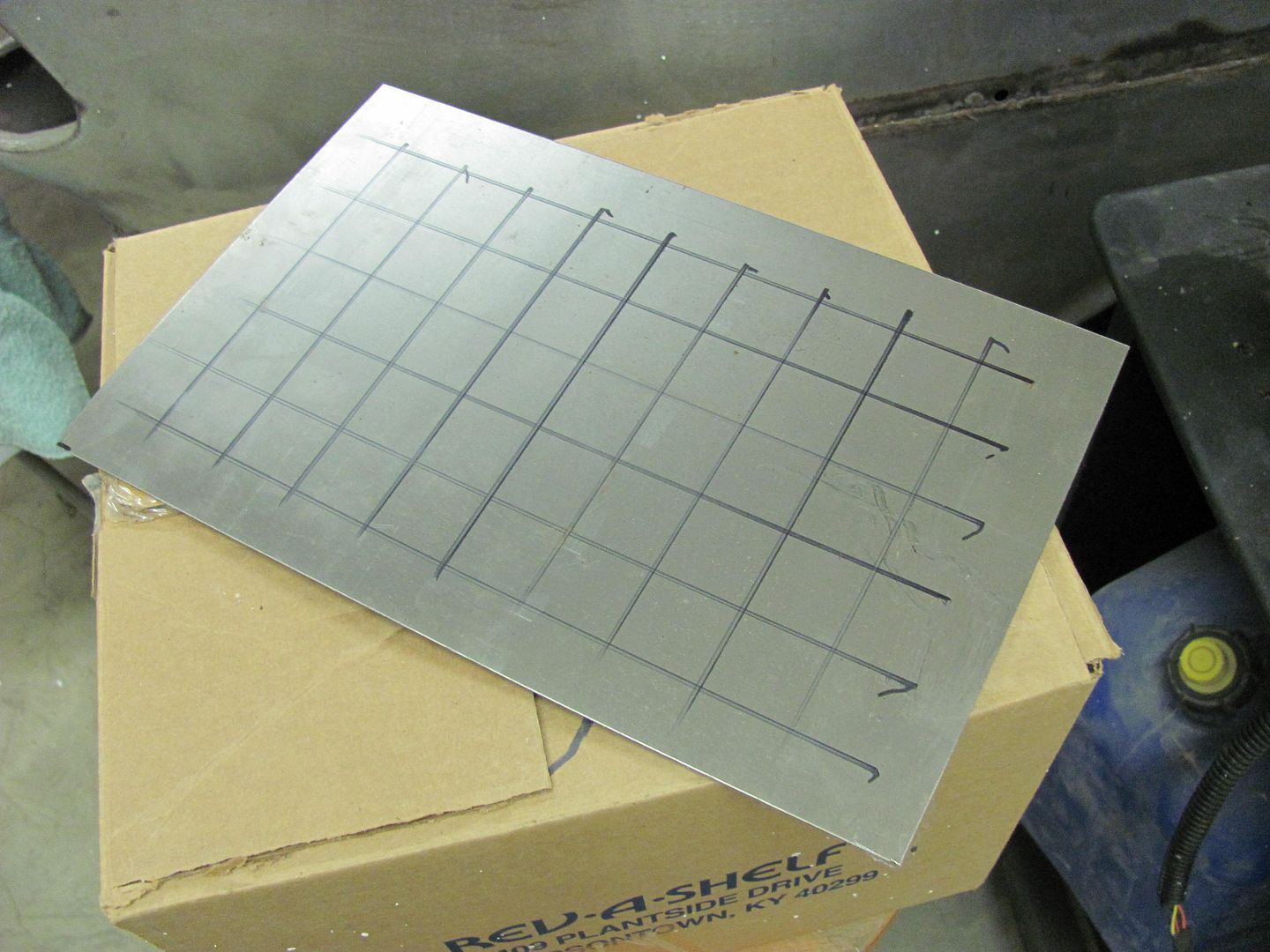
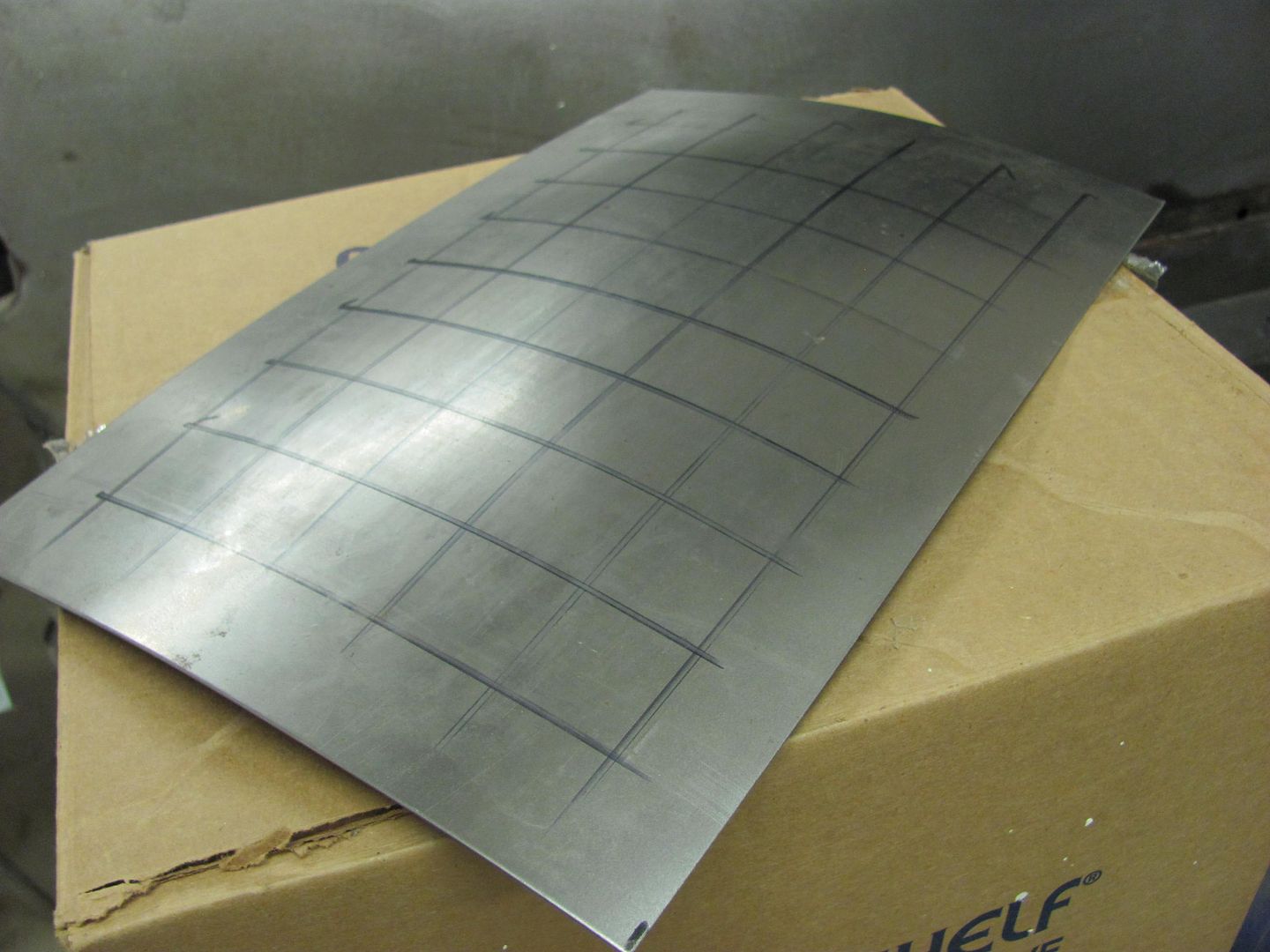
The first order of business should be to make some profile templates. In the case of an actual dented roof, use the opposite, undamaged side. This will allow you to check your progress as you go, and easily find the remaining high spots.
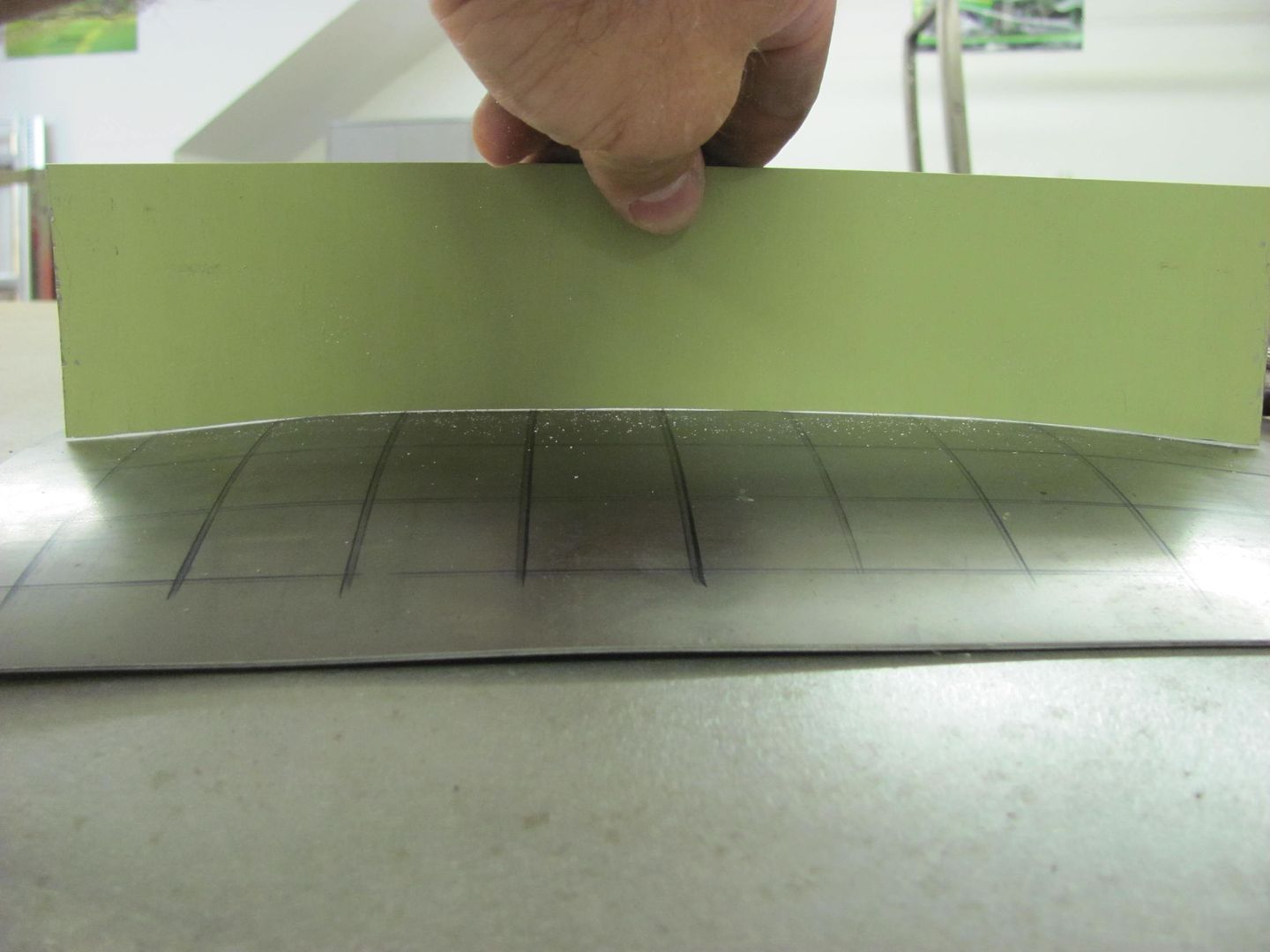
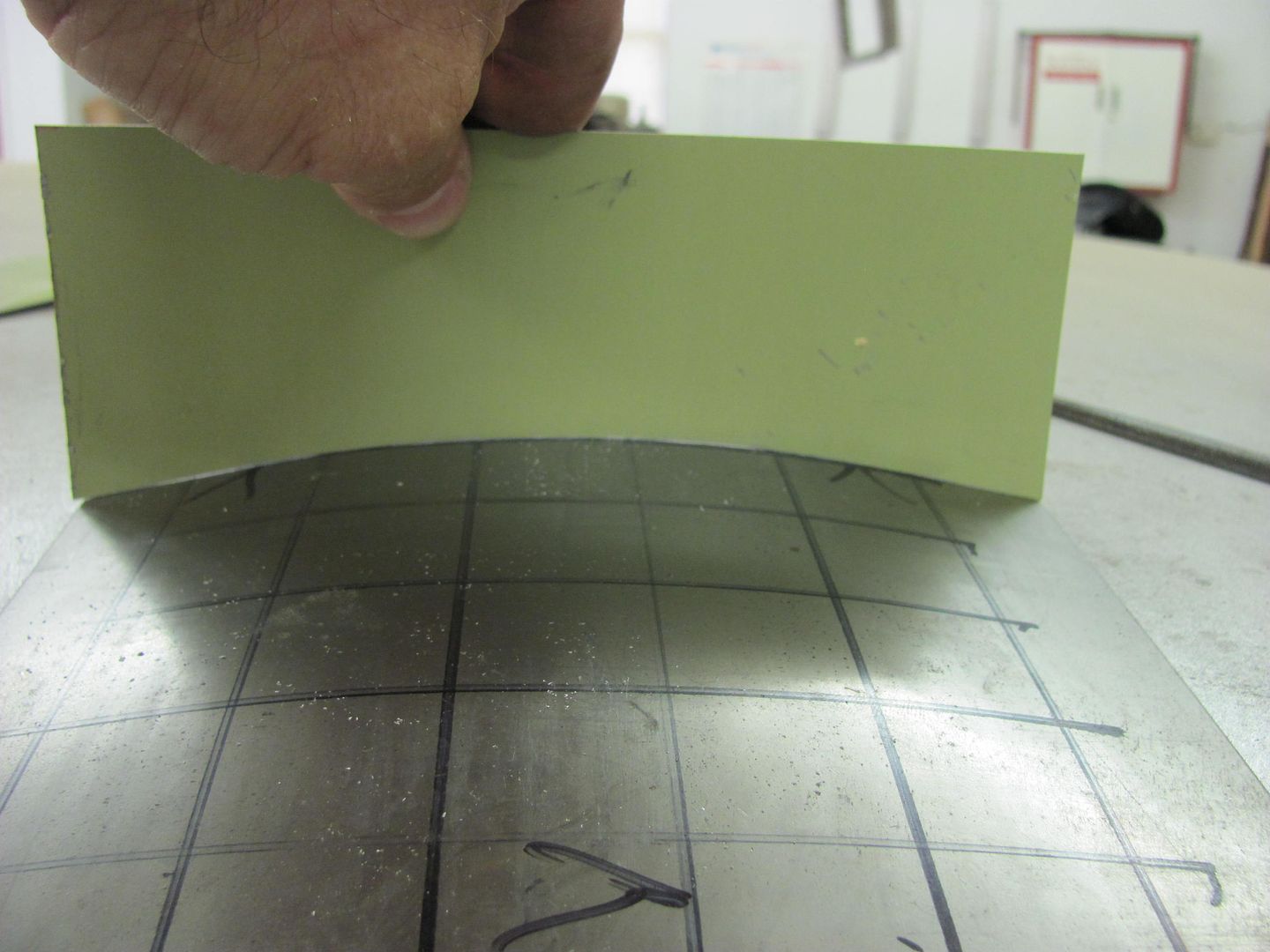
Using a crowned body hammer, a "dent" will be added from the back side, crossing both of our template areas, to simulate his outward dents in the roof.
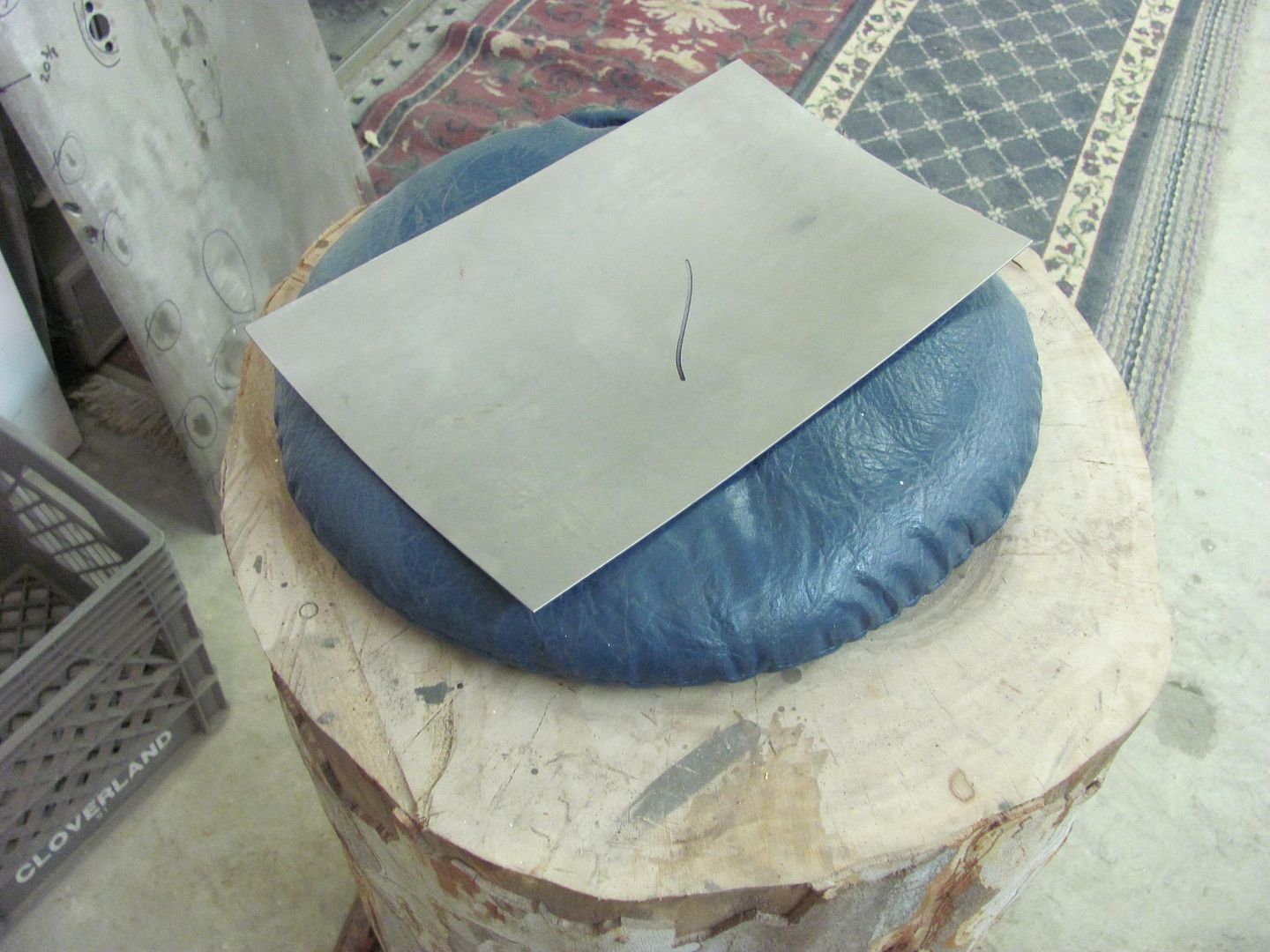
With the dent added:
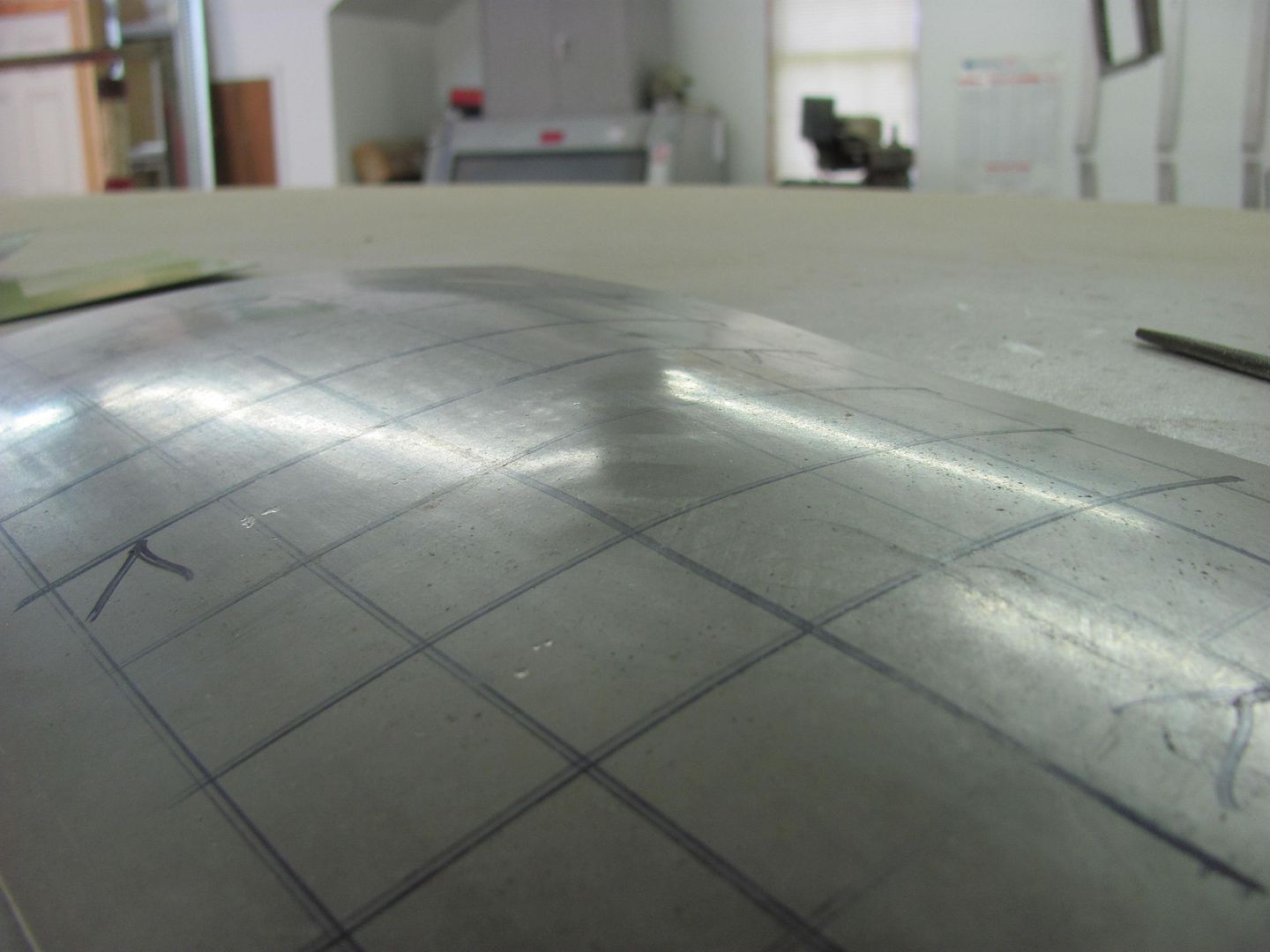
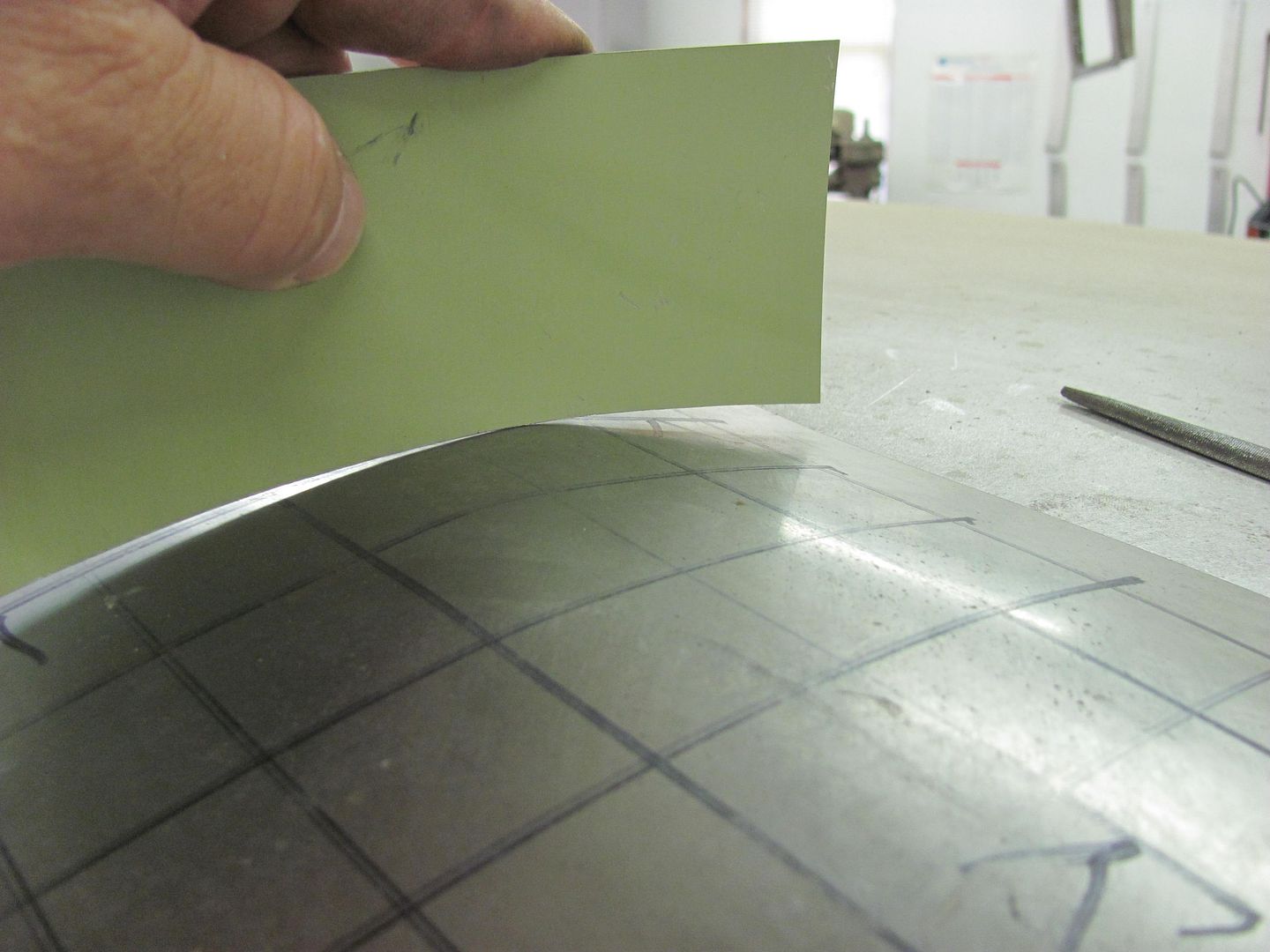
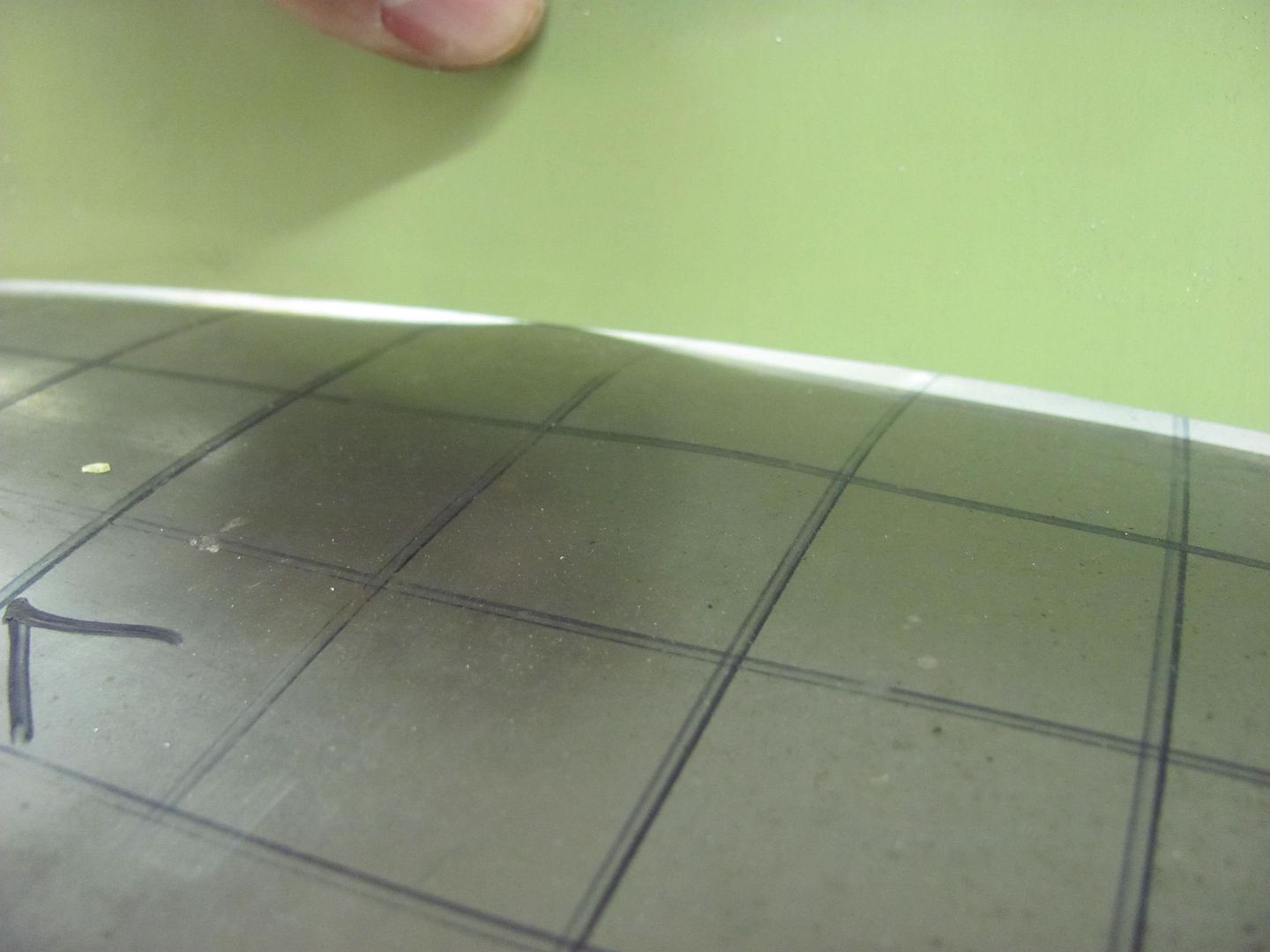
I chose to use a PVC elbow, it had two different sized ends for two tools in one. As with any body tool, they should be free of any burrs that may mar the metal surface. I also added a slight radius to the edges...
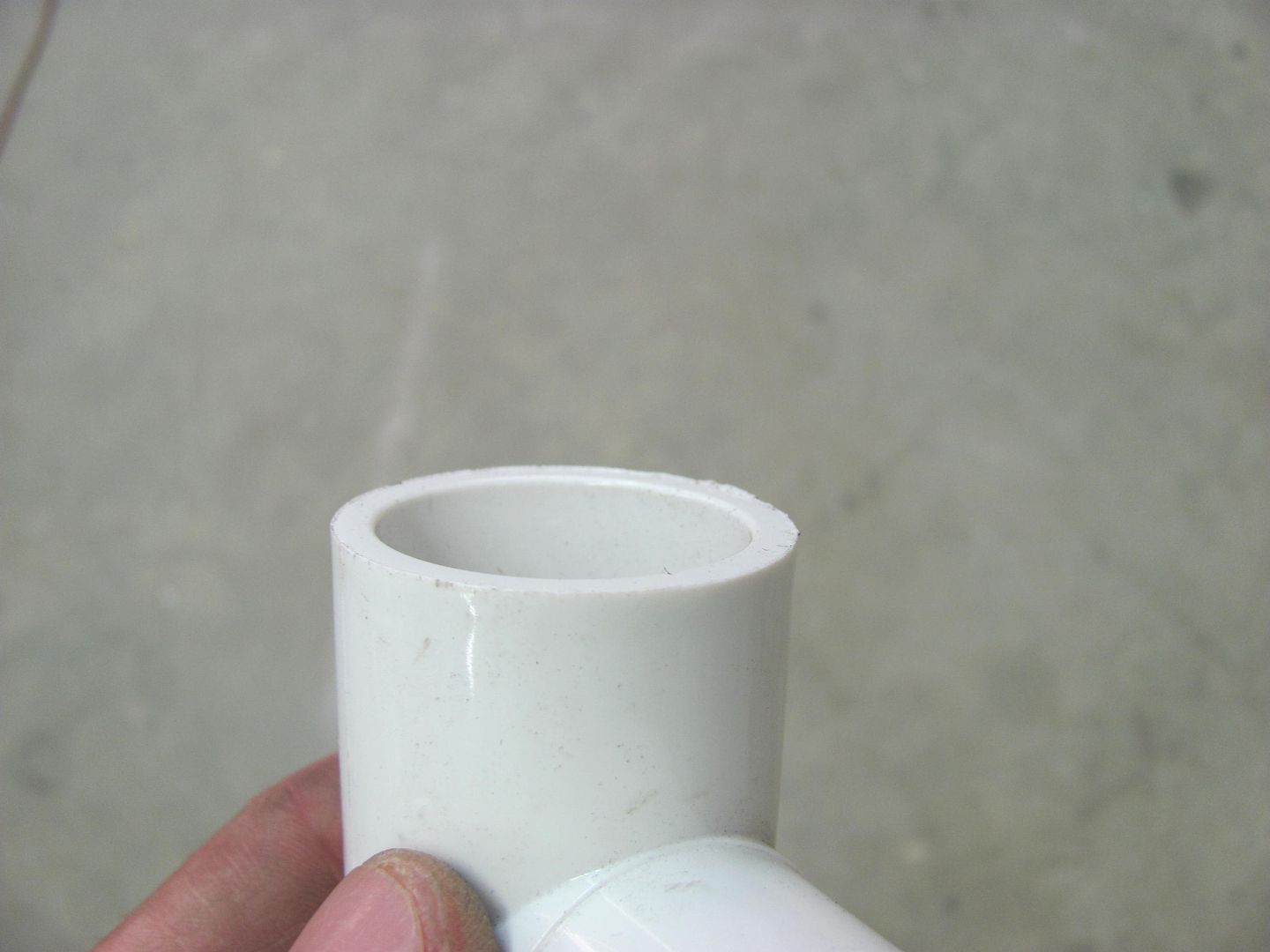
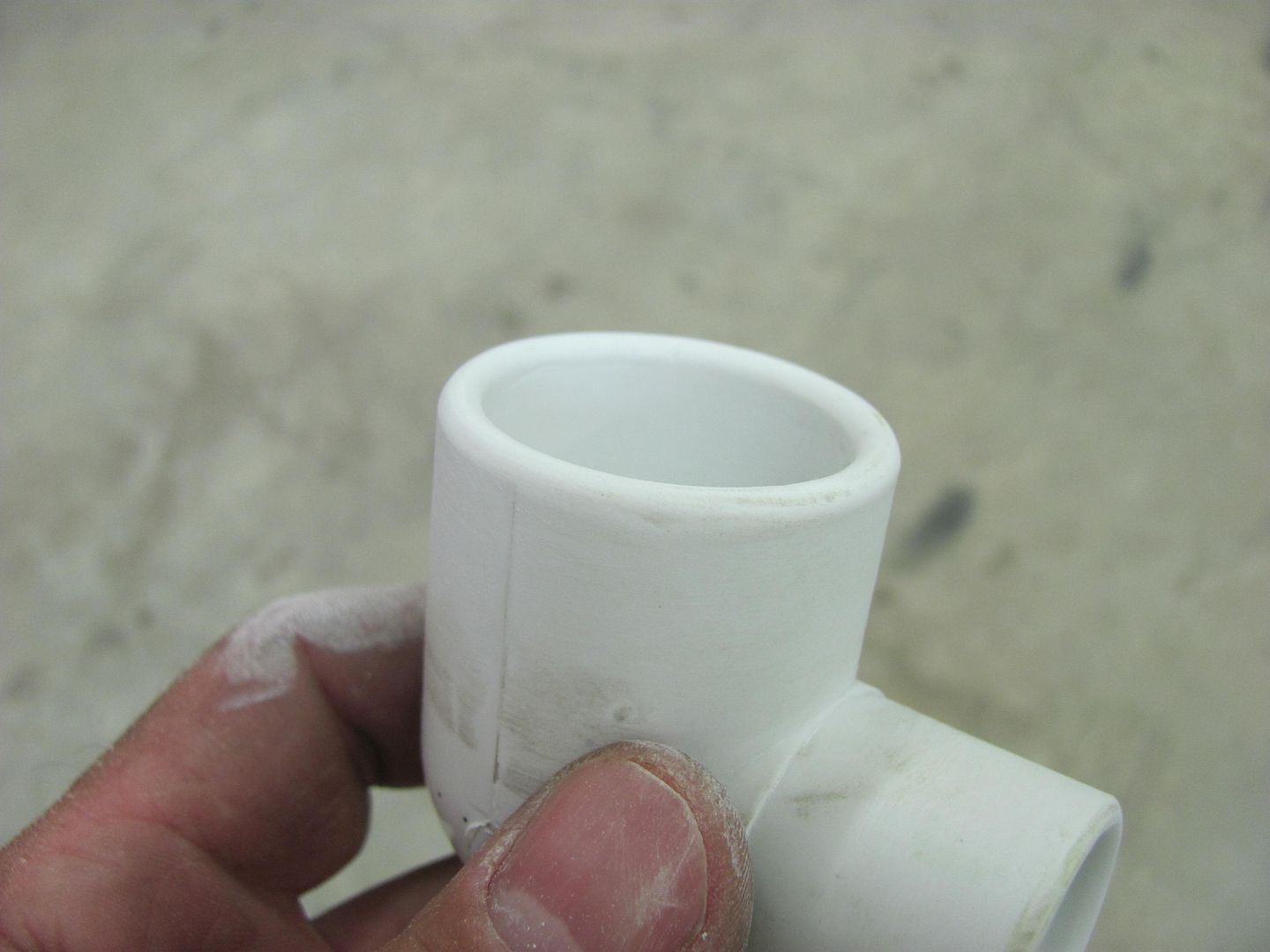
Holding the dolly against the bottom of the panel, you can see that due to the dents it only touches the panel at the red arrows. Based on off-dolly principle, the shrink would occur more prominently in the direction of the red arrows. Typically the panel will have more stretch across (perpendicular to) the dent crease, so more shrink is needed in this direction (red arrows)
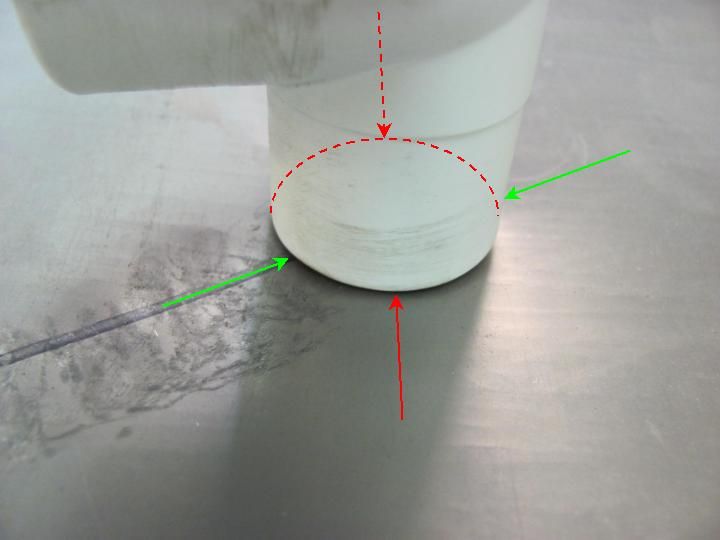
Here are the tools we will use today:
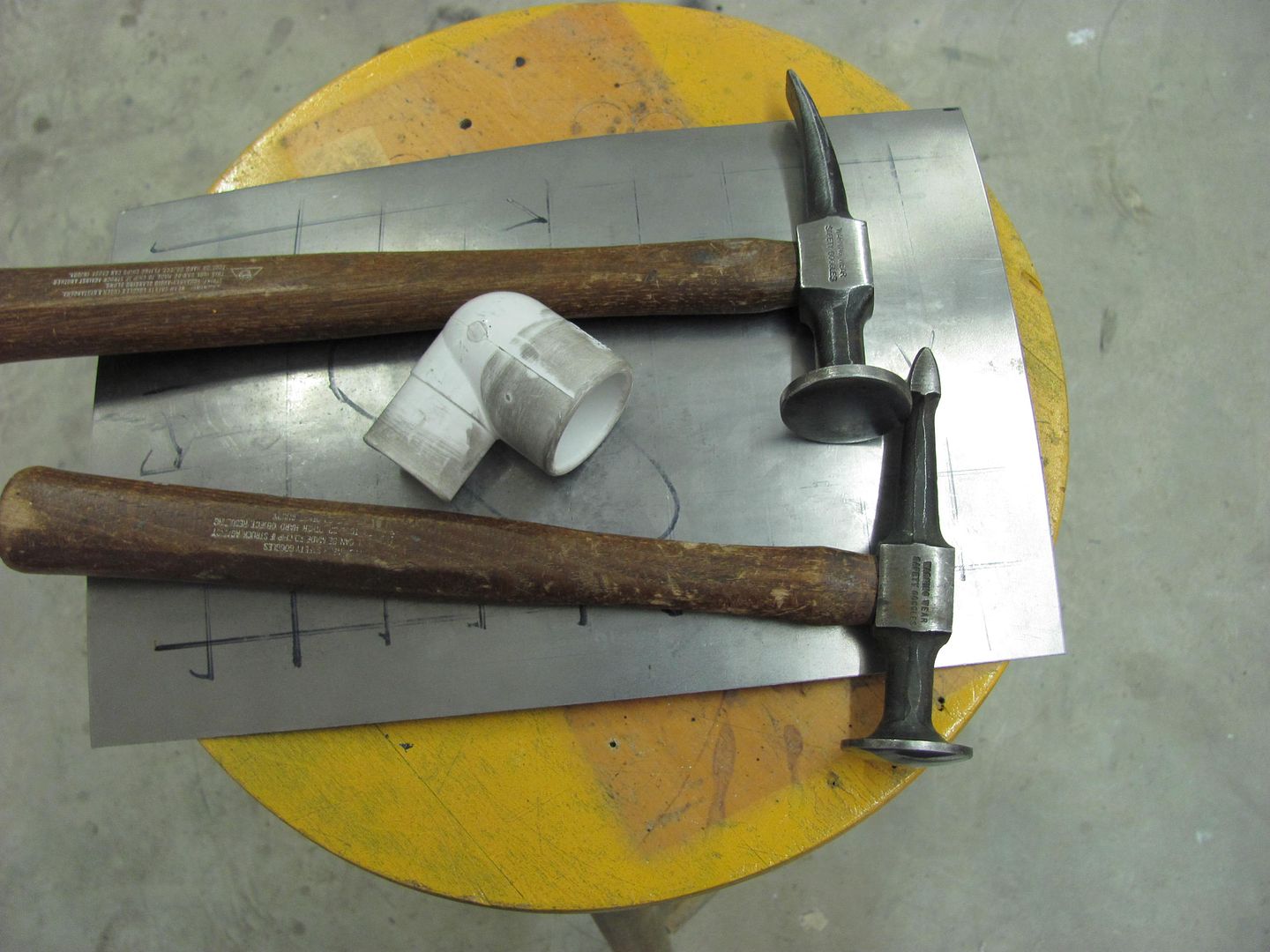
After some off-dolly bumping:
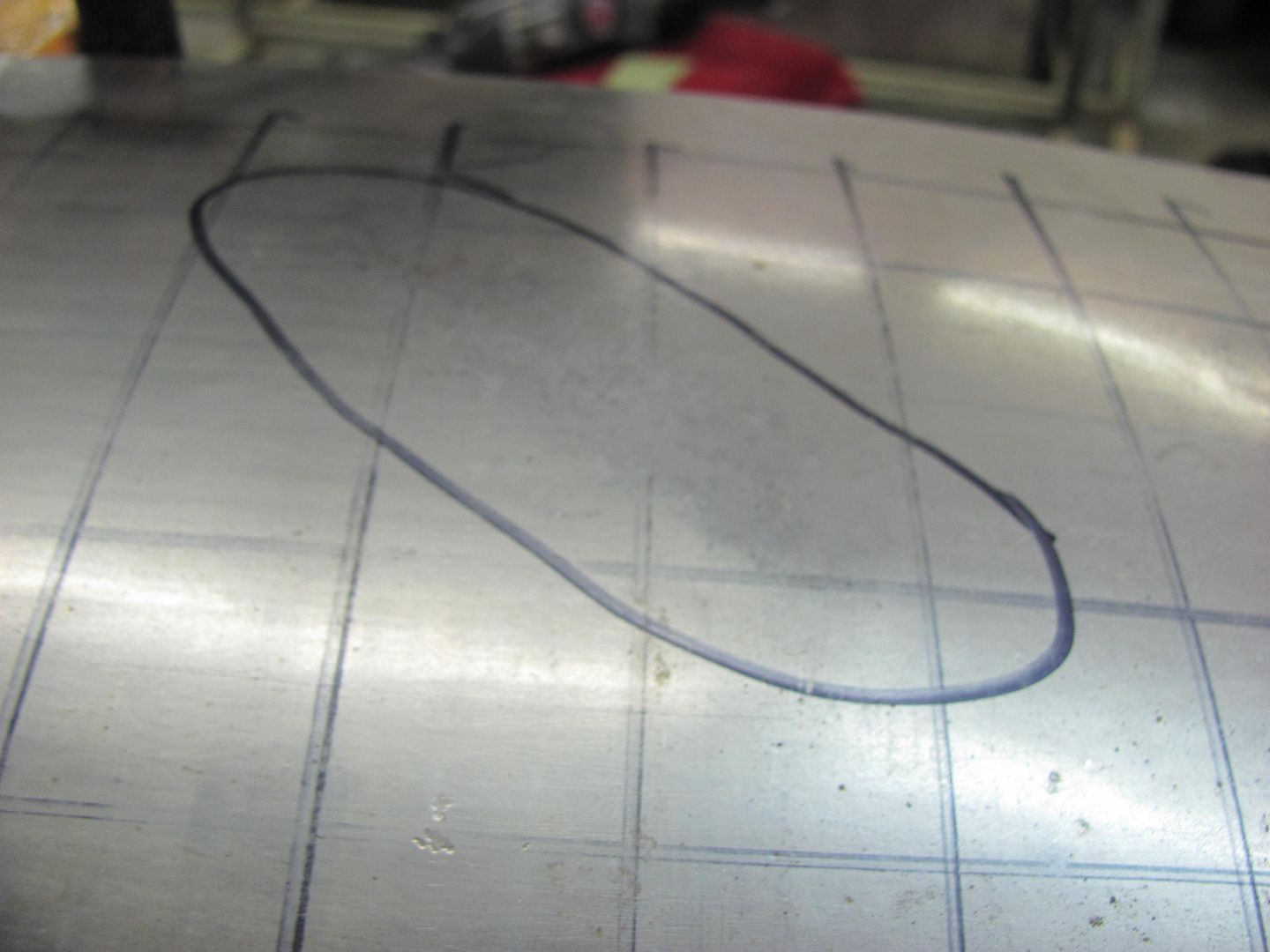
Check with the templates
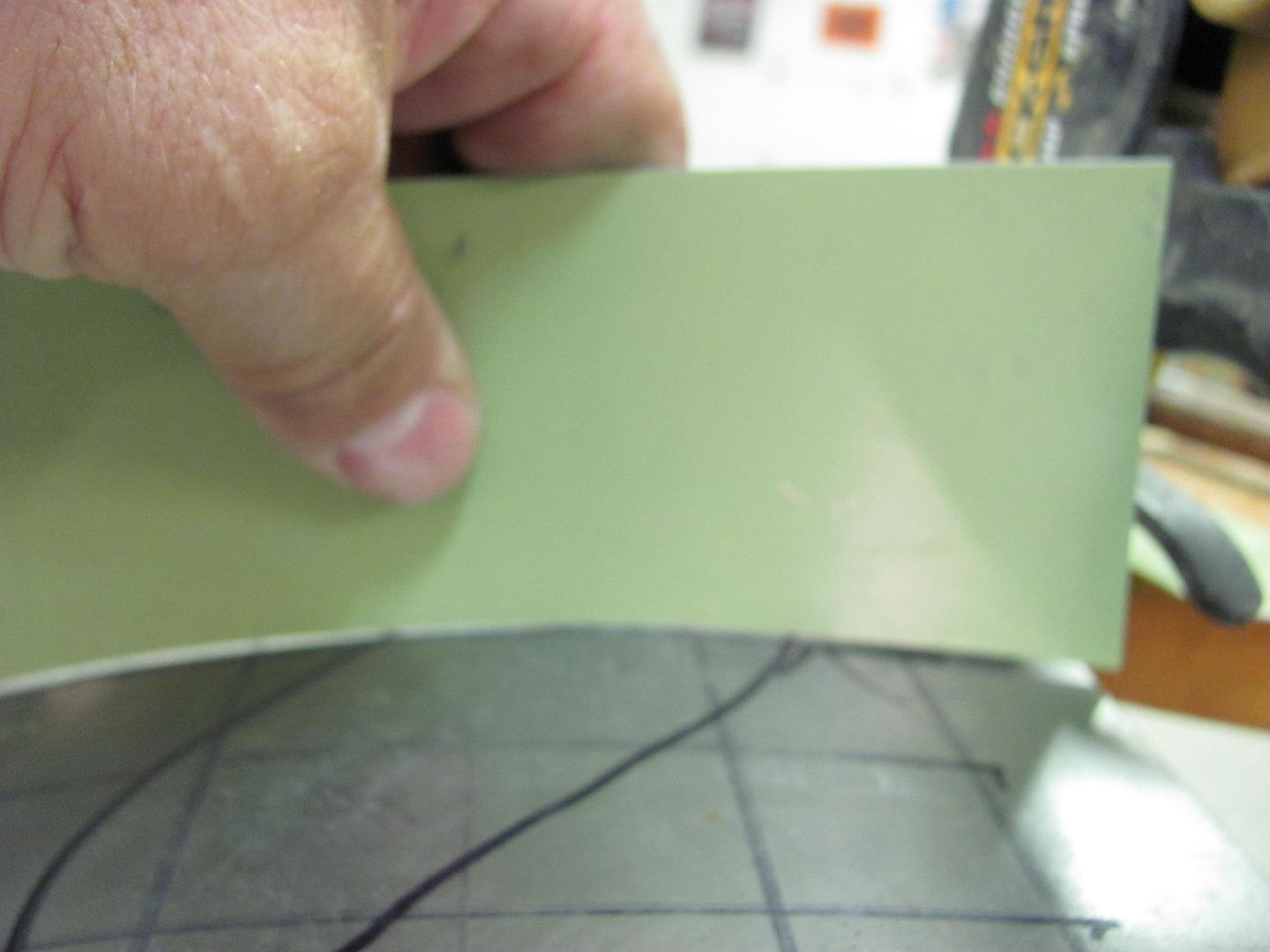
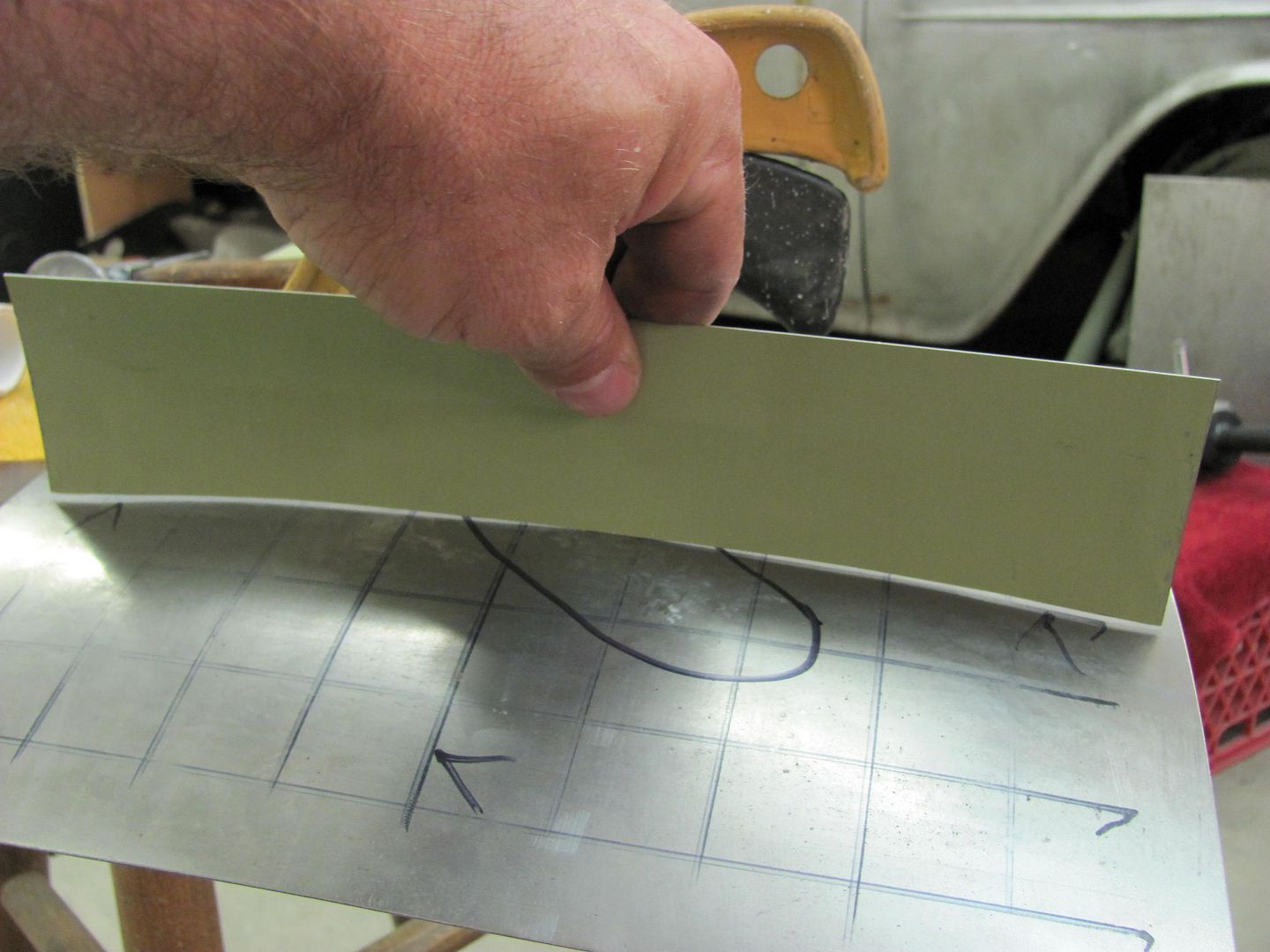
Progress....these are light taps only with the hammer. We just want to bring down the high spots, not create craters.
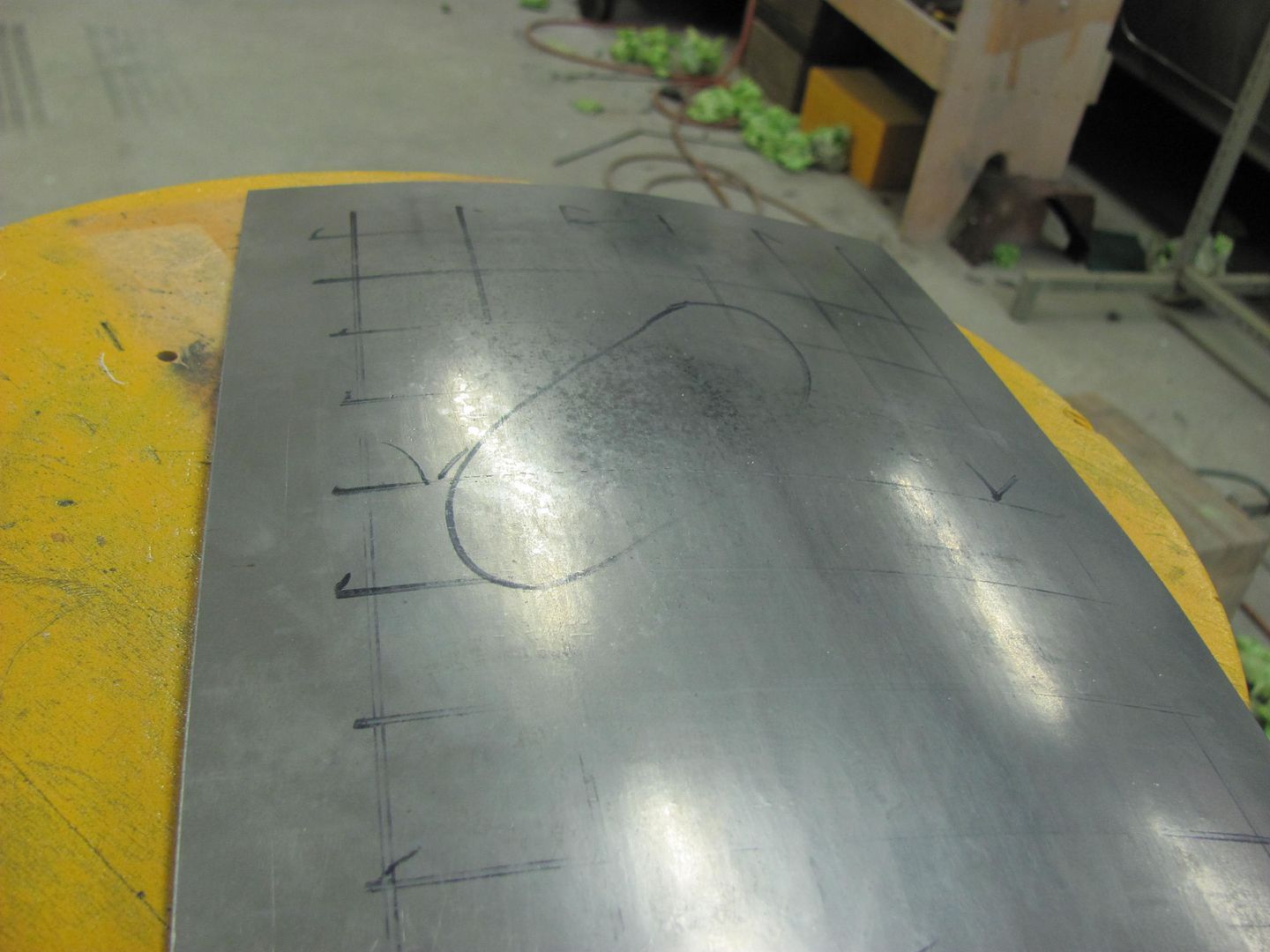
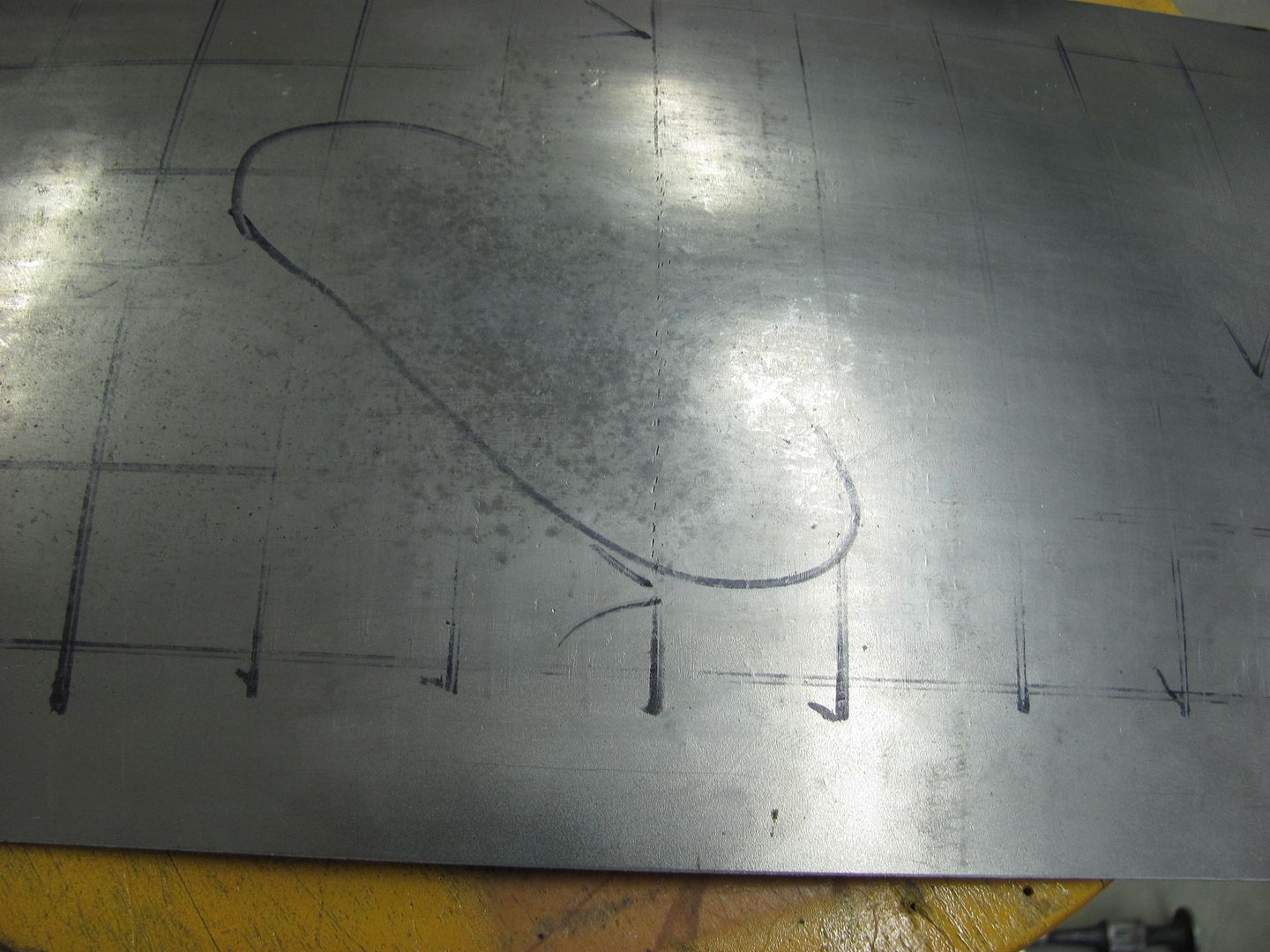
Here's where I finished up...
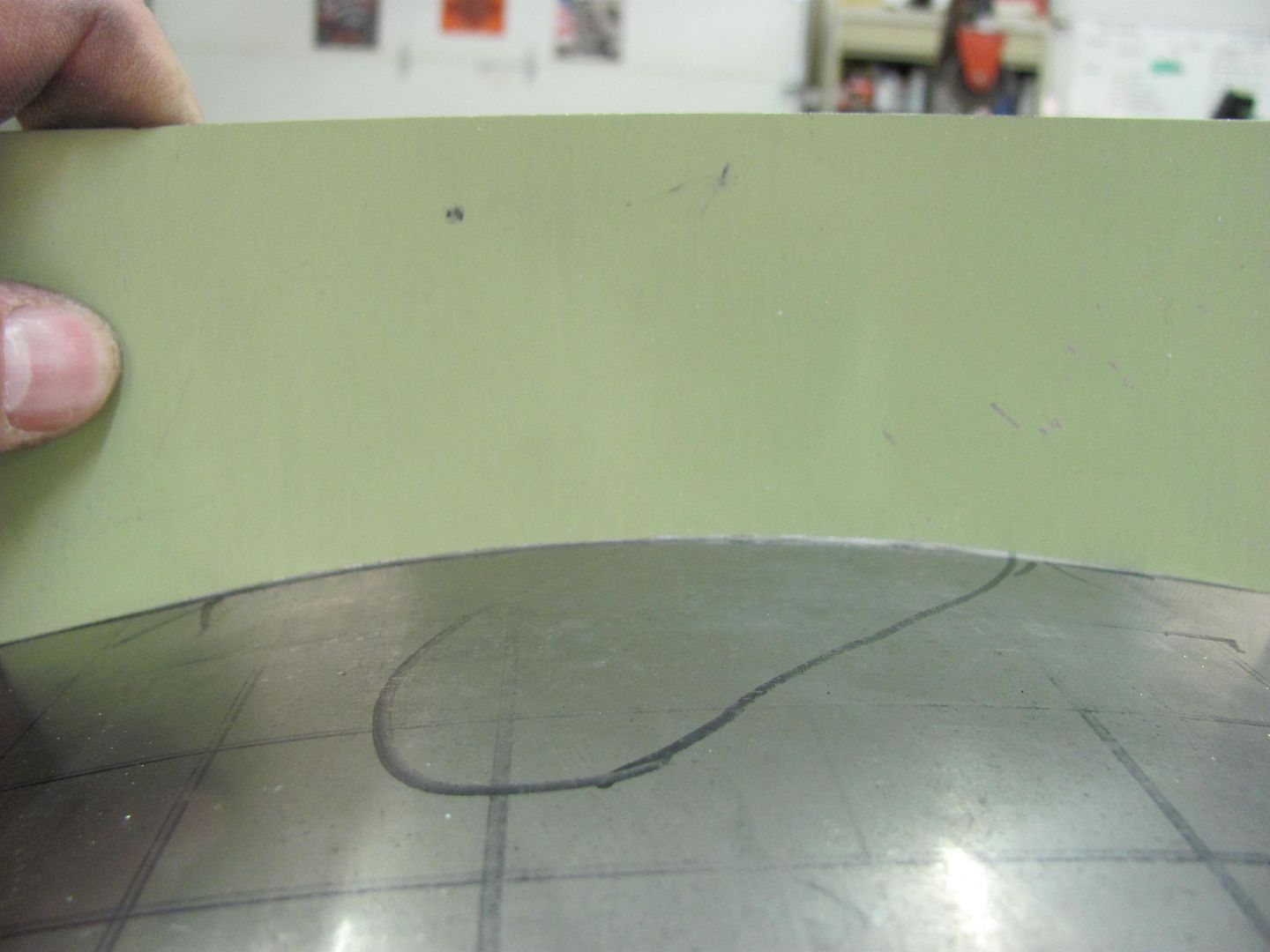
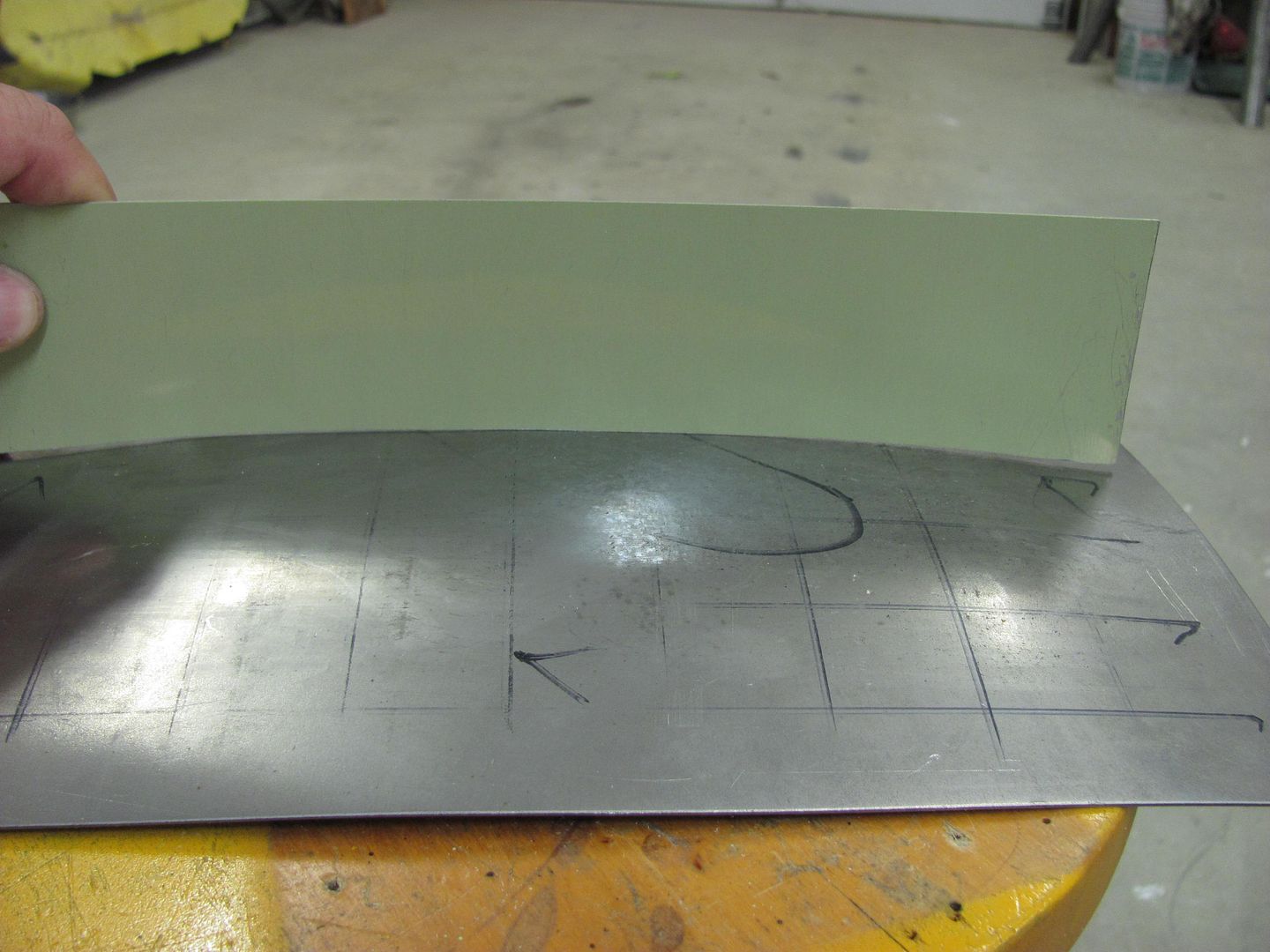
I have a little over an hour in making the panel, denting, and removing the dent. Where I still could have gone a bit more, it was about to a point where high build primer should have masked any remaining imperfections. This dent removal could also have been accomplished with heat shrinking using an O/A torch, etc, but for those times where you may not wish to use heat and want another option, this seems to work well. I think with using the donut dolly and it's heftier mass, one could shave some additional time off the repair. You'll notice the flat bus door repair used a crowned hammer, and the crowned roof "panel" repair used a flat hammer. Basically you'll need a hammer that pushes some of the stretch into the hollow to capture some of the excess so it will shrink, without pushing so much that it causes a dent. Using a flat hammer on flat metal doesn't move enough, and using a crowned hammer on a panel that is crowned the other direction is likely to cause dents, so there the flat hammer is used. So hammer selection was used based on the shape of the panel.Last edited by MP&C; 02-10-2012 at 03:00 PM.





 1Likes
1Likes LinkBack URL
LinkBack URL About LinkBacks
About LinkBacks
 Reply With Quote
Reply With Quote

John's ride to the cemetery, his beloved Billings OK bus, The Baby Elephant!! Traveling in style!! - -
John Norton aka johnboy